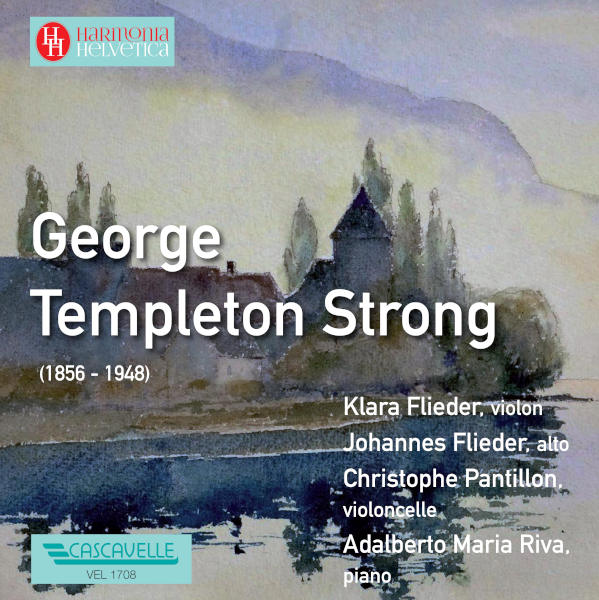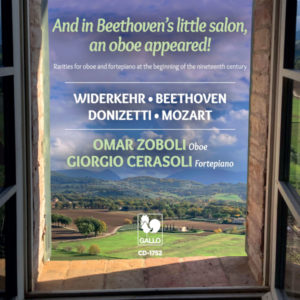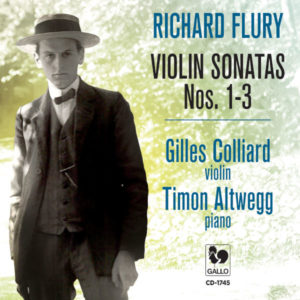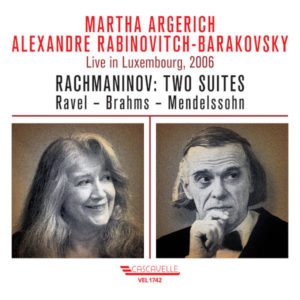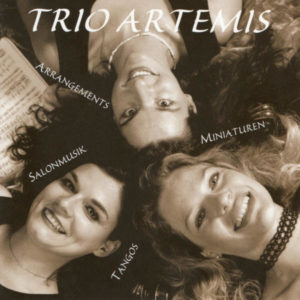Extraits / Excerpts
George Templeton Strong: Quatre nocturnes - Cinq pièces dans le style du passé - Klara Flieder - Johannes Flieder - Christophe Pantillon - Adalberto Maria Riva
George Templeton STRONG: Quatre nocturnes: I. Une nuit de printemps, en canot – II. Une nuit d’été, les adieux – III. Une nuit d’automne, les feuilles mortes – IV. Une nuit d’hiver, autour du foyer – Elégie, pour violoncelle et piano – Une vie d’artiste, pour violon et piano – Petite Rêverie et Scherzo pour trois violoncelles et contrebasse* – Cinq pièces dans le style du passé: I. Sarabande – II. Mélodie – III. Danse – IV. Adagio – V. Impromptu.
Klara Flieder, Violin
Johannes Flieder, Viola
Christophe Pantillon, Cello
Adalberto Maria Riva, Piano
http://www.adalbertomariariva.net
* Uta Korff-Strassl, Cello
* Grégoire Federenko, Cello
* Gerhard Muthspiel, Double Bass
Association Harmonia Helvetica,
p. a. Marc Savary, Av. de Chailly 21b, 1012 Lausanne
www.harmonia-helvetica.ch
George Templeton Strong (1856 – 1948)
George Templeton Strong was born in New York on 26 April 1856. His father, an eminent lawyer and passionate music lover, wrote a diary that remains one of the fundamental sources for the study of American musical life in the nineteenth century. From an early age George studied the oboe and tried his hand at composition, to which he soon wished to devote himself entirely. Faced with his father’s opposition, the young man broke with his family and, in 1879, left for Europe to complete his training. Following the example of the young American musicians of his time – such as Chadwick and MacDowell – he went to Germany and worked with Salomon Jadassohn and Joachim Raff in Leipzig. A great admirer of Franz Liszt, he presented Liszt with his symphonic poem Ondine, which met with the master’s approval. From 1886 to 1889 Strong lived in Wiesbaden, and in 1891 he was appointed professor of composition in Boston. The following year, however, he returned to Europe and settled in La Tour-de-Peilz. For almost ten years he gave up composition almost entirely in order to devote himself to painting: a remarkable landscape painter, he left numerous watercolours based on nature.
He made friends with various personalities in the Swiss intellectual and musical world, notably Ernest Ansermet who, from 1913, conducted his works in Montreux and then in Geneva, where Strong frequently appeared in the programmes of the Orchestre de la Suisse Romande. In 1911, the composer settled permanently in Geneva, where he became a much-loved and respected figure on the artistic scene.
He continued to compose until the mid-1930s, and his music was championed by such performers as Joseph Szigeti, Wilhelm Mengelberg, Arturo Toscanini and the famous Flonzaley Quartet. Faithful to the post-romantic aesthetic and embittered by the feeling that he belonged to an aesthetic of the past, George Templeton Strong died in Geneva on 27 June 1948.
Over the course of his long creative career, Strong tackled practically every genre except opera and religious music. He wrote his most ambitious works before 1900, such as his symphonies and symphonic poems Ondine (1883), Sintram (1887-89) and Le Roi Arthur (1890). After his return to composition, he cultivated more reduced forms, often with a free structure. An outstanding orchestrator, he wrote some remarkable scores for the orchestra. His chamber music includes works for rare ensembles that attest to his taste for instrumental timbre (horn quartets, cello quartets, trios for two violins and violas, or violin, viola and piano, duets for viola and cello or cello and harp). In addition to his lieder, melodies and choruses, George Templeton Strong left an abundant legacy for piano.
Jacques Tchamkerten
